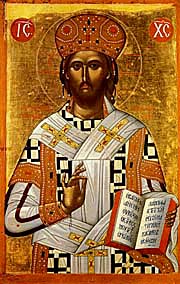The Institute for Christian Formation

Third Sunday of Advent
December 16, 2012

Today is the Third Sunday of Advent, and when you light your Advent Wreath today, and each day this week, you will light two violet candles and the rose colored candle. Advent is a time of preparation and waiting. Violet, which expresses penance and/or waiting, is the primary liturgical color during this season. Rose, however, is the color for this third Sunday of Advent, “Gaudete Sunday”. The word “Gaudete” is Latin for "rejoice". The entrance antiphon for Mass the third Sunday of Advent begins with words from Saint Paul's Letter to the Philippians, "Rejoice in the Lord always". We rejoice that the Lord's coming is near!
Our First Reading at Mass today is from the Prophet Zephaniah (Zephaniah 3:14-18a). Joy and rejoicing figure prominently in this reading. Our Second reading today is from Saint Paul’s First Letter to the Philippians (Philippians 4:4-7). In this reading, Saint Paul tells us we should always rejoice.
Our Gospel today once again features John the Baptist (Luke 3:10-18). Last Sunday, we incorporated the hymn, “On Jordan’s Banks the Baptist’s Cry,” into our prayer and reflection. You can download this hymn here. Listen to this hymn below, while viewing the various images of John the Baptist.
In addition to being the Third Sunday of Advent, or Guadete Sunday, today is also December 16, the day of the beginning of the Las Posadas celebration. "Las Posadas" is Spanish for lodgings or inns. Recall that in Luke’s account of the birth of Jesus, the infant Jesus was laid in a manger because there was no room for Mary and Joseph in the inn. (Luke 2:7) In many Hispanic cultures, there is a tradition of a novena (nine day prayer) preparing for Christmas. This includes the celebration of Las Posadas. Las Posadas begins on December 16 and concludes on Christmas Eve, December 24.
Las Posadas may involve an entire neighborhood or village. It is a reenactment of Mary and Joseph searching for lodging in Bethlehem, as they awaited the imminent birth of Jesus. Each evening of Las Posadas, those participating process from home to home asking for lodging and hospitality. The participants may be led by two people dressed as Mary and Joseph. Perhaps Mary might even be riding on a donkey! Sometimes two children play the roles of Mary and Joseph, or the participants might carry statues of Mary and Joseph in their procession. The pilgrims are rudely turned away, until finally they find hospitality and are welcomed in! There are traditional songs for the Las Posadas celebration, and luminaria light the way. The home offering hospitality generally has a manger set up. The pilgrims have a small statue of the Christ Child which they place in the manger. Las Posadas ends with the breaking of a piñata, and is usually followed by participants going to church to celebrate Midnight Mass.
Read today's Gospel again slowly, and think about the questions being asked of John the Baptist. How does John reply to these queries? Keep John's responses in mind as you view and reflect on the following two videos about Las Posadas.



Why not have a Las Posadas celebration in your neighborhood this Advent? It’s an excellent reminder that we are all pilgrims on a journey, and that we all seek hospitality and are called to offer hospitality to others. In welcoming others, especially those in need, we welcome Christ!
To prepare for your celebration, read "The Night of Las Posadas," by Tomie dePaola (ISBN 0-399-23400-4). You could also make a piñata for your celebration. You can find directions on how to make one at home here. You can also purchase one at your local party supply store. (In the videos
above you can learn about the theological significance of the piñata.) Enjoy sipping some traditional Mexican hot chocolate as you prepare and celebrate!
